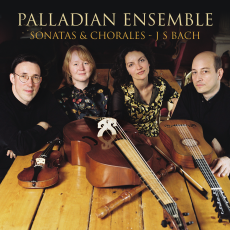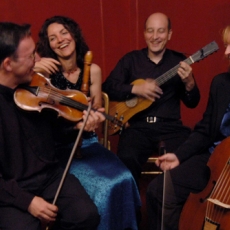Palladian Ensemble - Bach - International Record Review
The trio sonata BWV1039 originated, it seems, as a now lost sonata for two violins and continuo, before Bach arranged it in its present form for two flutes and continuo. He later reworked it into the Sonata BWV1027 for viola da gamba and obbligato harpsichord in which guise it is probably most familiar today. The Sonata BWV1021 for violin with basso continuo (rediscovered in 1928) shares the bass line of the Trio Sonata, BWV1038 for flute, violin and continuo, which the Palladian Ensemble does not perform on this disc. Possible, it too is an arrangement of a lost original. All the other works here are organ works. Transcribing them for recorder, violin and basso continuo could be explained as an endeavour to explore the possibilities inherent in Bach's score. Another purpose may simply be to experience Bach's more accessible organ pieces on a more intimate scale.
The Palladian Ensemble's most enjoyable arrangement is the Schubler Chorale on Wachet Auf ('Sleepers wake'), BWV645, in which Rodolfo Richter's violin takes the principal part and Pamela Thorby's recorder plays the chorale melody. Indeed, it is the chorale arrangements that work best of all, whether animated like the Leipzig Chorale trio on Herr Jesu Christ, Dich Zu Uns Wend. BWV655 or sombre like the prelude on the chorale Das Alte Jahr Vergangen Ist (BWV614) from Das Orgelbuchlein. The Violin Sonata is also a high point thanks to Richter's supple and imaginative performance and the sensitive continuo contributions of William Carter and Susanne Heinrich.
The highly detailed DSD sound gives a wonderfully natural sense of the room around the room

